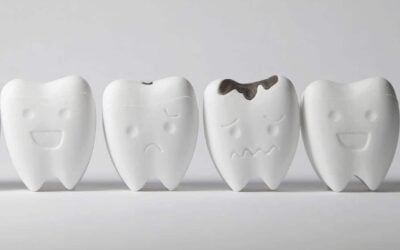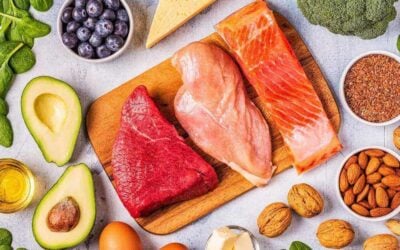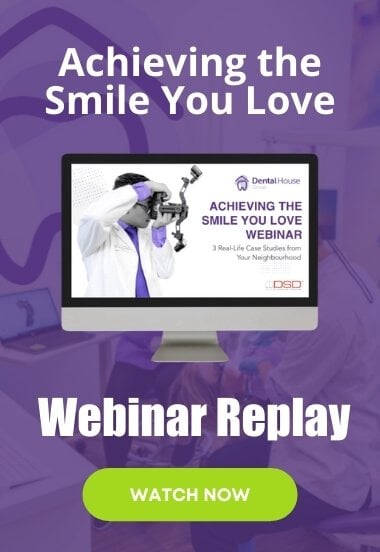The Teeth-Gnashing Trashing of Good Oral Health & the Planet By Ultra-Processed Foods
The Teeth-Gnashing Trashing of Good Oral Health & the Planet By Ultra-Processed Foods

Within these inflammatory conditions are mouth ulcers, gingivitis and periodontal disease. Periodontal disease is known to detrimentally impact the cardiovascular and cerebrovascular systems. It physically affects the types of foods that can be comfortably chewed, can cause bruxism, changes sleep patterns, and lower self-esteem – all of which create changes in mental health. And so the journey through bad health begins …
Defined as, “.. formulations of ingredients, mostly of exclusive industrial use, that result from a series of industrial processes” ultra-processed consumables are considered a group of foods when it’s challenging to consider them a food at all.
Food, by definition is – according to Britannica – “substance consisting essentially of protein, carbohydrate, fat, and other nutrients used in the body of an organism to sustain growth and vital processes and to furnish energy.”
How a snack food fits into that category is a stretch – other than it being a substance, and that it undoubtedly contains carbohydrates and fats. As far as it furnishing energy, technically it does – and it’s under no obligation whatsoever to mention the rate at which it strips energy too.
Typically, an ultra-processed food (UPF: like the sound of sluggish digestion) consists of copious processes, little or no wholefoods, and contains so many additives and preservatives that to create it in your own kitchen is to scour the neighbourhood for anti-caking agents and emulsifiers.
Other than the absolute wordsmith joy of putting anti-caking agents into cake, you wouldn’t make it when you can buy the real deal for just a few bucks. Again and again and again.
The production of UPFs is a global, trillion-dollar industry. And we made it that way. To ‘unmake’ it, we have to stop buying what’s killing us all. Whether you eat this stuff or not, ultra-processed food trashes our planet.
And it’s not just the packaging.
‘Chip’ is shorthand for everything that’s wrong with the Western global diet. Researchers claim that non-perishable, mass-produced, cheap snack food is “… one of the most obesity-promoting foods for youth to consume. Potato chips are very high in energy density and have a low satiety index, yet they are commonly consumed as snacks.”
Ultra-processed foods disrupt the brain. Anecdotally, it’s all around us even if we choose to not see it. The angry shop-meltdowns, the road rage, the seepage of stupidity that often has us stop short.
A 2015 study of older adults revealed a smaller hippocampus in people with regular, and/or high consumption of junk food, soft drinks and processed meats in comparison to the brain scans of those following a more balanced diet of fresh foods and ample water intake.
These people were not food fanatics. They simply viewed food in a way that until 60 years ago, was very normal: smaller portions, seasonal eating, and treating treats as treats – once in a while, not once you’re whiling the weekend away.
In theory, everyone wants to be healthy.
Even if the idea of making meals from scratch has you reach for a calmative and the closest you get to regular exercise is walking to your car, you still don’t want to be ill. And that’s part of the problem: the International Food Information Council’s Food and Health Survey shows people can’t even agree on what being healthy means. And that’s not the only confusion and contradiction in the way people perceive the foods they eat and the health they have.
The chemical concoction that is ultra-processed food, edges out nutrient-rich foods that help protect the brain, while stoking low-level inflammation. It’s as brilliant a plan as ripping out the smoke detectors to fan the combusted wiring to ignite a fire throughout your entire house.
Ultra-processed foods are higher in ingredients we know are not good for us – namely salt, fat and sugar – and new evidence suggests that the negative health impacts are more than the sum of UPF parts.
Mark Lawrence, professor of public health nutrition at Deakin University, maintains that you don’t have to cut processed foods out of your diet entirely and that the health risks appear “… once you begin eating more than two servings a day.” “Like everything else in life,” he said, “it’s about moderation.”
Others disagree. There is no moderation. Ultra-processed foods are specifically designed to counteract that. According to them, removing them entirely is the only way to go. Cold turkey.
With vegetables and salad.
In potato chip manufacturing alone, cottonseed, corn and sunflower oils are used, along with canola and safflower and numerous blended oils. Canola and sunflower crops are among the most environmentally destructive crops on the planet. There is more land devoted to vegetable oil crops than all fruits, vegetables, legumes, nuts, roots and tubers combined. It’s what makes them two of the top three drivers of global deforestation, and emit more greenhouse gases than any other crop. The cherry on top of all that (if you could grow some somewhere) is that vegetable oils account for 20-30% of global food production land, and deliver less than 0.01% of the world’s nutrients.
Vegetable oil crops are the billionaires of the plant world – taking so, so much more than they need in exchange for so very, very little.
Frito-Lay, the US manufacturer of nothing but snack foods that includes the likes of Doritos, Cheetos and Pringles, employs more than 500 food technologists, psychologists and technicians to exact and extract exactly how to make junk food addictive. It spends over $US30m a year on research, and had a machine developed that simulates a chewing mouth.
Donald Trump might have one of those, although it could just be the way he speaks.
A typical UPF conglomerate (name removed, starts with an F) can pay all these people and have these strange things because its annual revenue is almost $US16 billion.
For doing nothing other than making humans sick en masse, and messing with a massive mass of our food-producing resources. How? By being good at one thing: ensuring that the crunch level and neurological response of its products keeps us shovelling it down and crying out for more.
Ultra-processed food is large-scale production with a compound annual growth rate at 10.1%. It’s primed to hit $US334.58 billion mark in 2026, and parallels the tobacco industry in its political activities.
It’s a horrific sign of the times when the Centers for Disease Control recently announced its revised and extended children and adolescents growth charts, needing to broaden its BMI range to encompass the broadening number of broad children with measurements indicating “severe obesity”. According to its data, in the US alone more than 4.5 million young Americans are in this category.
Molecular biologist Professor Marion Nestle, (no relation to Nestlé), Paulette Goddard Professor of Nutrition, Food Studies, and Public Health, Emerita, at New York University until her 2017 retirement, argues that diet is inherently political – given to disputes about which people should eat what, and who gets to determine what constitutes ‘healthy.’
In her book Food Politics she writes that these disagreements “… inevitably involve struggles over the way government balances corporate against public interests … They are revealed whenever a company attacks its critics as ‘food police’ or justifies self-interested actions as a defence of freedom of choice. They are expressed whenever food companies use financial relationships with political leaders and nutrition and health experts to weaken the regulatory ability of federal agencies, and whenever they go to court to block unfavourable regulatory decisions.”
F*** Inc is only the second largest snack food company in America. It’s ‘mom’ is PepsiCo; known as ‘Pepsi-Cola’ in her younger, more carefree days. Now that she’s worth $US232 billion who knows how she sees herself, although indeed someone comfortably aligned with Pepsi’s current slogan That’s What I Like.
Swiss company Nestlé S.A., mostly known for its confectionary, is a conglomerate of bottled water, coffee, pet products, health-care products, frozen foods and with an annual turnover of $US100 billion.
Which should make you not want to buy Kit Kats anymore. With that sort of money Nestlé maybe be giving them away, particularly since they’re not worth much as a food.
In 2022, much like a prince and a showgirl smacking an institution, Nestlé blamed a shrinking profit margin for price hikes while sitting on a slice of global market cake worth $US237.42 billion.
That’s billions, folks. Billions, not exactly the singular, billion.

The process of extrusion – where a substance is pushed through a small opening, (the die) to shape it – is the way anything from a windscreen wiper to a plastic bag is made. You could probably make an ultra-processed food at a windscreen wiper factory just by substituting the rubber with a paste of cereal flour and colouring, and deciding on the length.
For Cheetos, (the most popular UPF in the world) the heat and friction of the extrusion plates melts the starch in the corn. This meal ‘pops’ at boiling point, creating the formula shapes. This final extruded product is formally referred to as the ‘extradate’ which is then fried, and sandblasted with chemicals for colour and taste.
The cornmeal is so industrially pulverised that when it’s fried, although its crunch is hard, it immediately shatters and dissolves to nothing. And in case you didn’t know, that red (or yellow, as in cheese ones) lickable dust that’s left on your fingers is called cheetle.
That’s as good as knowing what an aglet is.
Frito-Lay uses a ‘Texture-ometer’ for these complexities of optimisation. Unfortunately for the likes of Harambe, no such equivalent microscopically evaluates the worth and intelligence of animals and the enclosures in which we keep them.
And why we do that at all.
Apparently the most frequently extruded material in the world is aluminium, with a 2021 global market value of $US87.84 billion: far below the more than $US237 billion of snack foods.
How does that not make UPFs the most extruded product in the world? Is it an oversight, or is the information on these pseudo-foods as confusing and conflicting as an agreed baseline of good health?
The largest market craving for these calorific, nutrient-light, heavy-in-fats extradates is Asia Pacific; followed by North America. Although Western Europe, Eastern Europe, South America, the Middle East and Africa are all certainly included in the regions of this grim and graceless commerce, any running order seems superfluous. The snappy snack food industry has its teeth in all of us – made of cane sugar, gelatine, wheaten starch and colours 171, 122 and 123.
In the same way tobacco is sold in many countries without branding, advertising or being on display, maybe ultra-processed foods should simply be generically branded as Extradates and the point of difference just shape and colour.
Telling yourself you need a packet of extradates rather than a packet of insert-favoured-brand-name here, doesn’t sound anywhere near as appealing. Nor does it have the neurological response.
Our brain and body are neither prepared nor built for modern junk food because all foods activate the reward centre of the brain.
With ultra-processed foods, it’s even moreso. And faster. Snack foods like Cheetos have over a dozen properties to excite your brain and crave the hyper-palatability of the product.
The simultaneous release of endorphins and the ‘feel-good’ neurotransmitter dopamine is the chemical party of motivation, pleasure – and learning a habit.
Or an addiction.
You can see where this is going.
Ultra-processed foods include more than just the obvious suspects, like chips, lollies, pre-prepared meals and packaged desserts. It also includes breakfast cereals, packaged white bread, sauces, instant soups, yogurt with added fruit, frozen sausages and other reconstituted meat products. Ultra-processed foods contain a list of ingredients with many of them created in food labs. Rather than include actual apple, they prefer to create the scent and sensation of an apple because in the profit-making world, convenience plus low cost and minimal preparation puts bread on the table.
That’s if bread was billions of dollars, and the table was a nice bit of Pacific island real estate and property in all the major cities of the world.
‘Flamin’ Hot’ Cheetos are deemed the most addictive snack food on the planet. In 2022, America reported the numerous hospitalisations of children as a result of overconsumption. Because of this, the product is banned in schools across the US; after averaging sales of 150,000 packets per school, per year.
What is in this UPF that has people not be able to stop eating them?
“Spicy, savoury and sweet” is how ‘Flamin’ Hot’ lovers describe this favourite food of theirs, which hit the market in 1990. Scientifically, for chips and like, the louder the sound, the fresher, crispier and more enjoyable the product is perceived to be. Crunchy-crispy is an enhanced, two-fold sensory experience and and largely what allows it to double down to irresistible.
And that’s what defines the perfect ultra-processed food.
Some health professionals claim that the red pepper spice found in hot Cheetos contains the natural chemical capsaicin, which signals the body to release natural opioids and endorphins and is the reason people can’t stop eating them.
While research has certainly shown the role capsaicin has in the release of brain chemicals and mouth sensations, there is not yet sufficient evidence for dependency. So it seems okay to crave nicotine or caffeine molecules, and have apps and platforms and games that fire off those same pleasure chemicals – so what the difference is with Cheetos, is rather unclear.
Could it be because it’s not acceptable for children to be addicted to substances? Online games, yes – but substances outside of sugar and behaviour modifying prescriptions may be a bridge too far, even when a single Cheetos can sell on eBay for $US99k.
In 2017 a 4cm piece of yellow puffy friedness was auctioned because it looked like Harambe in full profile: Cincinnati Zoo’s 200kg, silverback western lowland gorilla.
A three-year-old boy fell into the gorilla enclosure on May 28, 2016, the day after Harames’s 17th birthday. When zookeepers called to the three gorillas to bring them inside, only Chewie and Mara complied. Harambe chose to do his job and investigate the child. In the ten minutes that followed, he dragged him through the moat, stood him up, sat him down, and examined his clothes. He reportedly became agitated by the screams of the crowd. The zoo’s Dangerous Animal Response Team decided a tranquiliser dart would take too long to take effect and instead trained a sniper rifle at his head and took him out.
Harambe made us notice the price paid for stupid things. Stupid expectations, stupid policies, stupid planning and stupid parents. UPFs are a whole packet of that.
That ninety-nine-grand, single Cheetos represents the price we’re willing to pay for the zeitgeist perception of one piece of uniqueness, when all the while we’re trashing an entire world that was once abundant.
We may choose to ultra-process that.
Note: All content and media on the Sunbury Dental House website and social media channels are created and published online for informational purposes only. It is not intended to be a substitute for professional medical advice and should not be relied on as health or personal advice.
Services Mentioned
Related Articles
Some Sweet News For Diabetes Sufferers With Gum Disease
Diabetes type 2 is a scourge for sufferers and those with it know that well. Here is some sweet news for diabetes sufferers with gum disease. A new study performed at the University of Buffalo School of Dental Medicine made some helpful findings in this regard. The...
Can Gum Recession Be Fixed With Dental Bonding?
Gum Recession Fixes: Can gum recession be fixed with dental bonding? In some cases it can help and it is well worth a discussion with…
What’s New In Tooth Decay? Another Bacteria, That’s What
Four is quite a significant number to us humans. We like it. We live by it. The Chaldeans of Babylon loved it for their system of terrestrial and meteorological phenomena that told an astrological future encompassing earth, water, air and fire. Aristotle ascribed...
The Link Between High Fat Diets And Gum Disease
Sometimes, when it comes to diet and health you get the sense that you just can’t win. The link between high fat diets and gum disease could be fuel for that particular fire. Studies have revealed that high fat low carb diets produce worse outcomes in terms of...













